#patientregistration
Text
Maximizing Efficiency: Integrating Hospital Software with IoT Devices

In today's rapidly evolving healthcare landscape, the integration of hospital software with Internet of Things (IoT) devices is revolutionizing patient care delivery, operational efficiency, and overall healthcare outcomes. By harnessing the power of IoT technology, healthcare organizations can maximize efficiency, streamline workflows, and enhance patient experiences. Let's explore the benefits and implications of integrating hospital software with IoT devices.
Real-Time Patient Monitoring:
Hospital software integrated with IoT devices enables real-time monitoring of patient vital signs, activities, and health metrics.
IoT sensors embedded in medical devices, wearables, and patient monitoring systems capture data continuously and transmit it directly to the hospital software platform.
Healthcare providers gain instant access to critical patient information, allowing for timely interventions, proactive care management, and improved clinical outcomes.
Enhanced Asset Management:
IoT-enabled hospital software facilitates the tracking and management of medical equipment, supplies, and assets within healthcare facilities.
RFID tags, sensors, and beacons embedded in equipment and inventory items enable automated asset tracking, location monitoring, and inventory management.
Healthcare organizations can optimize asset utilization, reduce equipment downtime, and minimize inventory stockouts by leveraging real-time data insights provided by IoT-integrated hospital software.
Improved Facility Operations:
Hospital software integrated with IoT devices streamlines facility operations and maintenance processes, leading to increased efficiency and cost savings.
IoT sensors deployed throughout healthcare facilities monitor environmental conditions, energy usage, and equipment performance in real-time.
Facility managers can proactively identify maintenance issues, optimize energy consumption, and ensure regulatory compliance by leveraging data-driven insights from IoT-enabled hospital software.
Remote Patient Care and Telemedicine:
IoT-integrated hospital software enables remote patient monitoring and telemedicine consultations, expanding access to healthcare services and improving patient engagement.
IoT-enabled wearable devices, home monitoring kits, and telehealth platforms facilitate virtual consultations, remote diagnostics, and medication adherence monitoring.
Healthcare providers can deliver personalized care plans, monitor patients' progress remotely, and intervene as needed, resulting in better health outcomes and reduced hospital readmissions.
Predictive Analytics and Preventive Care:
Hospital software integrated with IoT devices leverages data analytics and machine learning algorithms to predict and prevent adverse events and medical complications.
IoT sensors capture and analyze vast amounts of patient data, including physiological parameters, lifestyle factors, and environmental triggers.
Healthcare organizations can identify patterns, trends, and risk factors early on, enabling proactive interventions, personalized treatment plans, and preventive care strategies to improve patient health and wellness.
In conclusion, integrating hospital software with IoT devices offers tremendous potential for maximizing efficiency, improving patient care, and transforming healthcare delivery. By harnessing real-time data insights from IoT-enabled devices, healthcare organizations can enhance clinical workflows, optimize resource utilization, and deliver more personalized and proactive care to patients. Embracing IoT integration in hospital software is not just a technological advancement but a strategic imperative for driving innovation and achieving excellence in today's dynamic healthcare environment.
#HMS#hmssoftware#hospitalsoftware#HealthcareManagementsystem#Healthcare#HospitalManagementSystem#HospitalManagement#BSA#GrapesHMS#MIS#EMR#GrapesIDMR#Grapes#HealthcareManagementSystemsoftware#Software#SoftwareSolution#Doctor#PatientRegistration#IPDManagement#OPDManagement#IDMR#Labmanagement#NursingStation#Dietmanagement#MRDManagement#BloodBank#Linenmanagement#HRManagement#Pharmacy#Radiology
0 notes
Text
A Comprehensive Comparison of Leading HMS Software Solutions
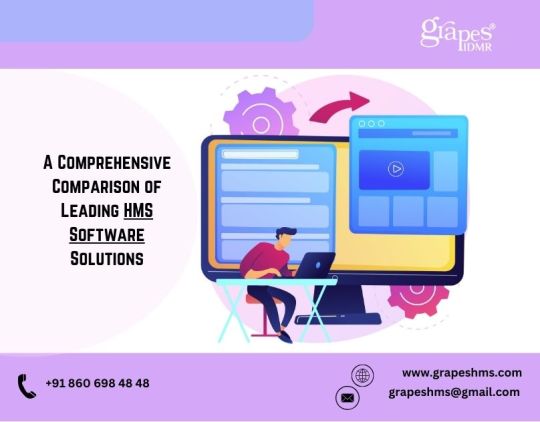
Choosing the best hospital management software (HMS software) for your healthcare organization is a crucial decision that requires careful evaluation of various factors. To assist you in this process, we have conducted a comprehensive comparison of leading HMS software solutions, highlighting their key features, functionalities, and benefits.
Epic Systems Corporation
Features: Epic offers a comprehensive suite of HMS software solutions, including electronic health records (EHR), patient scheduling, billing, and clinical decision support.
Functionality: Epic's software is highly customizable and scalable, catering to the needs of small clinics and large healthcare systems.
Benefits: Epic's HMS software is renowned for its interoperability, enabling seamless integration with other healthcare systems and facilitating collaborative care delivery.
Cerner Corporation:
Features: Cerner's HMS Software encompasses EHR, revenue cycle management, population health management, and telehealth capabilities.
Functionality: Cerner's software is known for its robust clinical decision support tools, data analytics capabilities, and patient engagement solutions.
Benefits: Cerner's HMS Software streamlines workflows, improves clinical outcomes, and enhances patient satisfaction through personalized care delivery and proactive population health management.
Allscripts Healthcare Solutions:
Features: Allscripts offers an integrated suite of HMS software solutions, including EHR, practice management, revenue cycle management, and patient engagement tools.
Functionality: Allscripts' software prioritizes interoperability, enabling seamless data exchange between disparate systems and enhancing care coordination across healthcare settings.
Benefits: Allscripts' HMS Software empowers healthcare organizations to deliver high-quality, patient-centered care, improve operational efficiency, and achieve better clinical and financial outcomes.
Meditech:
Features: Meditech provides a comprehensive suite of HMS software solutions, including EHR, patient registration, scheduling, billing, and clinical decision support.
Functionality: Meditech's software is designed to streamline clinical workflows, enhance patient safety, and optimize revenue cycle management through integrated, user-friendly interfaces.
Benefits: Meditech's HMS Software offers scalability, flexibility, and interoperability, enabling healthcare organizations to adapt to changing needs, improve care coordination, and achieve meaningful use of health IT.
NextGen Healthcare:
Features: NextGen offers a suite of HMS software solutions, including EHR, practice management, revenue cycle management, and population health management.
Functionality: NextGen's software prioritizes usability, interoperability, and data analytics, empowering healthcare organizations to drive better clinical and financial outcomes.
Benefits: NextGen's HMS Software enables healthcare organizations to optimize workflows, improve care quality, and enhance patient engagement through personalized, data-driven care delivery.
In conclusion, each of these leading HMS software solutions offers unique features, functionalities, and benefits to meet the diverse needs of healthcare organizations. When choosing the best HMS software for your business, consider factors such as interoperability, scalability, usability, and alignment with your organization's strategic objectives. By conducting a comprehensive comparison and selecting the HMS software solution that best fits your organization's needs, you can drive innovation, improve patient care, and achieve success in today's dynamic healthcare landscape.
#HMS#hmssoftware#hospitalsoftware#HealthcareManagementsystem#Healthcare#HospitalManagementSystem#HospitalManagement#BSA#GrapesHMS#MIS#EMR#GrapesIDMR#Grapes#HealthcareManagementSystemsoftware#Software#SoftwareSolution#Doctor#PatientRegistration#IPDManagement#OPDManagement#IDMR#Labmanagement#NursingStation#Dietmanagement#MRDManagement#BloodBank#Linenmanagement#HRManagement#Pharmacy#Radiology
0 notes
Text
What is the purpose of the lab management module in the hospital?
The primary purpose of the lab management module in the hospital's Best Healthcare Management System is to effectively oversee and optimize the operations within the laboratory. This module serves several critical purposes:
Efficient Workflow Management: It aims to streamline and automate various laboratory processes, reducing manual errors, and enhancing the overall efficiency of the lab. This includes managing sample processing, tracking, and result reporting.
Improved Accuracy and Quality: The module ensures standardized procedures and protocols to minimize errors, leading to more accurate test results and maintaining high-quality standards in laboratory testing.
Resource Optimization: It helps manage and optimize laboratory resources, such as inventory, equipment, and staff, leading to better resource utilization, reduced wastage, and improved productivity.
Regulatory Compliance: Ensuring adherence to regulatory standards and quality control measures is a fundamental purpose. The system assists in meeting healthcare regulations and compliance requirements.
Integration and Data Sharing: The module aims to integrate seamlessly with other hospital management systems, facilitating easy data sharing and enabling collaboration and communication among various departments within the healthcare system.
Enhanced Patient Care: The ultimate purpose is to improve patient care by providing timely and accurate test results, enabling healthcare professionals to make informed decisions and deliver better care to patients.
Data Analysis and Reporting: Generating comprehensive reports and utilizing data analytics to identify trends and areas for improvement is a core purpose. This assists in strategic decision-making and optimizing operational efficiency.
Security and Confidentiality: Safeguarding sensitive patient data is a critical purpose, ensuring the system is equipped with robust security measures to maintain confidentiality and comply with data protection regulations.
Adaptability and Scalability: The module is designed to be adaptable and scalable, serving the purpose of meeting the evolving needs of the hospital and allowing for system growth and adjustments as necessary.
Continuous Improvement: Supporting a culture of continuous improvement is a key purpose, focusing on identifying areas for enhancement in laboratory processes, technology, and overall healthcare service delivery.
In essence, the lab management module within the Best Healthcare Management System serves multiple purposes, all aimed at ensuring efficient, accurate, and high-quality laboratory operations, ultimately contributing to superior patient care and the overall success of the healthcare institution.
#HMS#HealthcareManagementsystem#Healthcare#HospitalManagementSystem#HospitalManagement#BSA#GrapesHMS#MIS#EMR#GrapesIDMR#Grapes#HealthcareManagementSystemsoftware#Software#SoftwareSolution#Doctor#PatientRegistration#IPDManagement#OPDManagement#IDMR#Labmanagement#NursingStation#Dietmanagement#MRDManagement#BloodBank#Linenmanagement#HRManagement#Pharmacy#Radiology
0 notes
Photo
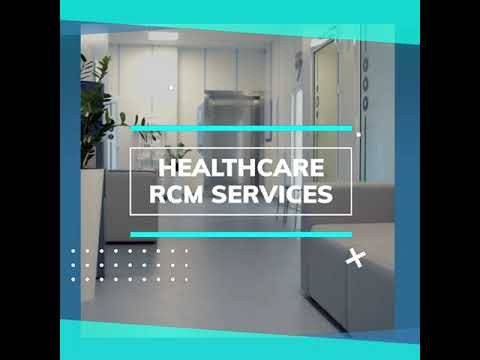
Health care RCM is the monetary procedure that centers the management of administrative and medical functions connected with claims processing, payment, and earnings generation. Site: https://bit.ly/3Ie8U6VProviders: https://bit.ly/3poM19AMail United States: [email protected] United States: +1 (972) 525-1177 #healthcarercm #rannsolve #texas #usa #RCM #revenuecyclemanagementsolutions #revenuecyclemanagement #healthcare #healthcareservices #healthcarercmproviders #DenialManagement #rannsolveinc #claimssubmission #medicalbilling #medicalcoding #patientregistration #patientscheduling #patientfollowup #insurancecheckup #patientcollection…
0 notes
Photo

Affirmations To Be More Patient 10 x Your Success By Downloading Special MP3 Version Of These Affirmations It's FREE! From Link Below… https://dailyaffirmations.xfunnels.io Download Free Spoken Positive Affirmations App https://goo.gl/dSsyMt #Patient #patientappreciation #PatientMan #patientevo #patientinstagramhusband #patientsafetymovement #patientinformation #patientschoice #patientreferral #patiententourismus #patientsbelike #patientlywaitingface #patientspotlight #patientkidsrock #patientfocusedservice #patientenrechte #patientregistration #patientengagement #PatientSeventeen #patientdoggy #patientcshoes #patientcenteredcare #patientfortheday #patientkitty #patientadvocacy #patientcentered #patientreunion #PatientPearls #PatientNoMore #patientcounseling https://www.instagram.com/p/Bz8KN5_grg2/?igshid=1sox58i4balsr
#patient#patientappreciation#patientman#patientevo#patientinstagramhusband#patientsafetymovement#patientinformation#patientschoice#patientreferral#patiententourismus#patientsbelike#patientlywaitingface#patientspotlight#patientkidsrock#patientfocusedservice#patientenrechte#patientregistration#patientengagement#patientseventeen#patientdoggy#patientcshoes#patientcenteredcare#patientfortheday#patientkitty#patientadvocacy#patientcentered#patientreunion#patientpearls#patientnomore#patientcounseling
0 notes
Link
Searching for Online Orthopedic Consultation in USA? Register here and get consultation about orthopedic surgery, orthopedic clinical treatment. MoonlightOrtho is capable of bringing patients interested in telemedicine services together with providers, via a cutting edge and patent-pending form of “Asynchronous Video Telecommunication”.
0 notes
Video
youtube
(via https://www.youtube.com/watch?v=YFaEAIREefo)
0 notes
Text
Why Cloud Solutions are the Future of Hospital Software
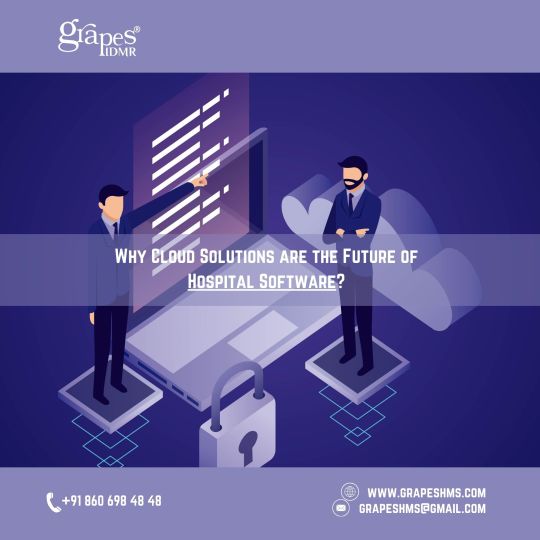
In today's rapidly evolving healthcare landscape, the adoption of cloud-based solutions is reshaping the way hospital software is deployed, managed, and utilized. Cloud solutions offer numerous advantages over traditional on-premises software, making them the future of hospital software. Let's explore why cloud solutions are leading the way in revolutionizing hospital software and driving innovation in the healthcare industry.
Enhanced Accessibility and Flexibility:
Cloud-based hospital software provides healthcare organizations with unparalleled accessibility and flexibility. Unlike traditional on-premises solutions, which are limited to specific physical locations or devices, cloud solutions can be accessed from anywhere with an internet connection. This enables healthcare professionals to access patient information, collaborate with colleagues, and perform critical tasks from the hospital, clinic, or even remotely, improving workflow efficiency and responsiveness to patient needs.
Scalability and Agility:
Cloud solutions offer unmatched scalability and agility, allowing healthcare organizations to scale their software infrastructure up or down based on changing needs and demands. Whether expanding services, adding new users, or integrating with additional systems, cloud-based hospital software can adapt quickly and seamlessly to accommodate growth and evolution. This scalability enables healthcare organizations to stay agile, responsive, and competitive in a dynamic healthcare environment without the constraints of traditional hardware limitations.
Cost-Effectiveness and Efficiency:
Cloud solutions offer significant cost savings and operational efficiencies compared to traditional on-premises software deployments. With cloud-based hospital software, healthcare organizations can avoid hefty upfront investments in hardware infrastructure, software licenses, and IT personnel required for on-premises deployments. Instead, they can benefit from a pay-as-you-go subscription model, where they only pay for the resources and services they use, eliminating unnecessary expenses and reducing total cost of ownership over time.
Improved Security and Compliance:
Contrary to common misconceptions, cloud solutions offer robust security measures and compliance capabilities that meet or exceed those of traditional on-premises deployments. Leading cloud providers invest heavily in state-of-the-art security technologies, data encryption, access controls, and compliance certifications to protect sensitive patient information and ensure regulatory compliance. By leveraging the expertise and resources of cloud providers, healthcare organizations can enhance data security, reduce risk, and maintain compliance with industry regulations such as HIPAA and GDPR.
Seamless Updates and Maintenance:
Cloud-based hospital software eliminates the burden of manual updates, patches, and maintenance tasks typically associated with on-premises deployments. Cloud providers handle software updates and maintenance automatically, ensuring that healthcare organizations always have access to the latest features, enhancements, and security patches without disrupting operations. This seamless update process minimizes downtime, enhances system reliability, and enables healthcare organizations to focus on delivering quality patient care rather than managing IT infrastructure.
In conclusion, cloud solutions are the future of hospital software, offering unparalleled accessibility, scalability, cost-effectiveness, security, and efficiency compared to traditional on-premises deployments. By embracing cloud-based hospital software, healthcare organizations can unlock new opportunities for innovation, collaboration, and growth while enhancing patient care delivery and driving operational excellence in the digital age. Embracing cloud solutions is not just a technological upgrade but a strategic imperative for healthcare organizations looking to thrive in an increasingly interconnected and data-driven healthcare landscape.
#HMS#hmssoftware#hospitalsoftware#HealthcareManagementsystem#Healthcare#HospitalManagementSystem#HospitalManagement#BSA#GrapesHMS#MIS#EMR#GrapesIDMR#Grapes#HealthcareManagementSystemsoftware#Software#SoftwareSolution#Doctor#PatientRegistration#IPDManagement#OPDManagement#IDMR#Labmanagement#NursingStation#Dietmanagement#MRDManagement#BloodBank#Linenmanagement#HRManagement#Pharmacy#Radiology
0 notes
Text
How to Choose the Best HMS Software for Your Business

Selecting the right hospital management software (HMS software) is a critical decision for healthcare organizations, as it directly impacts patient care, operational efficiency, and overall success. With numerous options available on the market, choosing the best HMS software can be a daunting task. Here are some key factors to consider when evaluating and selecting the best HMS software for your business:
Define your requirements:
Before exploring HMS software options, it's essential to clearly define your organization's requirements, goals, and priorities. Consider factors such as the size of your organization, specialty areas, workflow complexities, regulatory compliance needs, and integration requirements with existing systems. Identifying specific features and functionalities that are essential for your business will help narrow down your options and ensure that the chosen HMS software aligns with your organization's objectives.
Assess Ease of Use and User Experience:
The best HMS software should be intuitive, user-friendly, and easy to navigate for healthcare professionals and staff members. Look for software solutions that offer a modern interface, customizable dashboards, and workflow automation features that streamline tasks and reduce manual effort. Consider conducting demos or trials of potential HMS software solutions to evaluate the user experience firsthand and assess how well the software aligns with your organization's workflow and user preferences.
Evaluate integration capabilities:
Integration with existing systems and technologies is crucial for seamless data exchange, interoperability, and workflow continuity. Evaluate the integration capabilities of HMS software solutions and ensure compatibility with your organization's electronic health records (EHR) systems, laboratory information systems (LIS), billing platforms, and other third-party applications. Choose HMS software that supports industry-standard protocols such as HL7 and FHIR and offers flexible integration options to meet your organization's unique needs.
Consider scalability and flexibility.
As your organization grows and evolves, your HMS software should be able to scale and adapt to changing needs and requirements. Assess the scalability and flexibility of potential HMS software solutions to accommodate future expansion, additional users, and new functionalities. Look for software vendors that offer modular solutions, customizable features, and flexible licensing options that can be tailored to your organization's size and growth trajectory.
Prioritize data security and compliance:
Data security and regulatory compliance are paramount in healthcare, and HMS software must adhere to stringent standards to protect patient information and ensure compliance with regulations such as HIPAA, GDPR, and HITECH. Evaluate the security measures and compliance features of HMS Software solutions, including data encryption, access controls, audit trails, and regular security updates. Choose HMS software vendors with a proven track record of prioritizing data security and compliance in their software development and implementation processes.
Assess vendor reputation and support:
Selecting a reputable HMS software vendor with a track record of success and a strong commitment to customer support is essential for a successful implementation and long-term partnership. Research vendor credentials, customer reviews, and case studies to gauge their reputation and reliability. Additionally, inquire about the level of customer support, training resources, and ongoing maintenance and support services offered by the vendor to ensure that your organization receives the necessary assistance and guidance throughout the implementation process and beyond.
In conclusion, choosing the best HMS software for your business requires careful consideration of your organization's requirements, user experience, integration capabilities, scalability, data security, vendor reputation, and support services. By assessing these key factors and conducting thorough research and evaluation, you can select an HMS software solution that aligns with your organization's objectives, enhances patient care delivery, and drives operational efficiency in the rapidly evolving healthcare landscape.
#HMS#hmssoftware#hospitalsoftware#HealthcareManagementsystem#Healthcare#HospitalManagementSystem#HospitalManagement#BSA#GrapesHMS#MIS#EMR#GrapesIDMR#Grapes#HealthcareManagementSystemsoftware#Software#SoftwareSolution#Doctor#PatientRegistration#IPDManagement#OPDManagement#IDMR#Labmanagement#NursingStation#Dietmanagement#MRDManagement#BloodBank#Linenmanagement#HRManagement#Pharmacy#Radiology
0 notes
Text
The Role of Telehealth in Modern Hospital Software Solutions
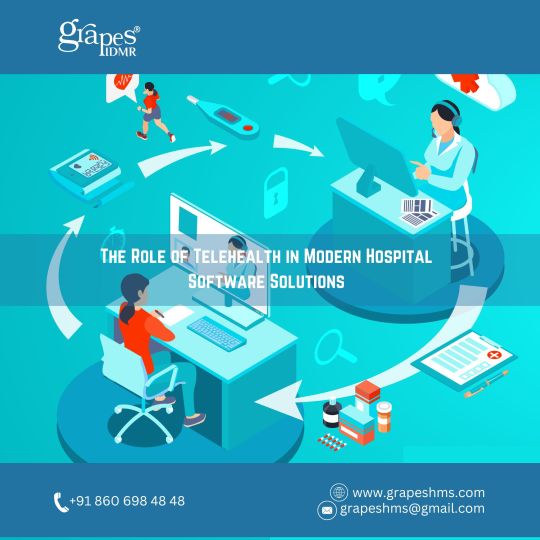
Telehealth has emerged as a transformative technology in the healthcare industry, revolutionizing the way patients access care and interact with healthcare providers. In the context of modern hospital software solutions, telehealth plays a pivotal role in extending the reach of healthcare services, improving patient outcomes, and enhancing overall efficiency. Let's explore the key aspects of telehealth within hospital software solutions and its impact on modern healthcare delivery.
Remote Consultations and Virtual Visits:
Hospital software solutions equipped with telehealth capabilities enable healthcare providers to conduct remote consultations and virtual visits with patients, regardless of their geographic location. Through secure video conferencing and messaging features, patients can connect with their healthcare providers in real-time, eliminating the need for in-person appointments and reducing travel time and expenses. Telehealth consultations facilitate timely access to care, especially for patients with limited mobility, chronic conditions, or those residing in rural or underserved areas.
Continuity of Care and Care Coordination:
Telehealth integrated into hospital software solutions facilitates continuity of care and seamless care coordination across different healthcare settings. Healthcare providers can securely share patient information, medical records, and diagnostic images electronically, ensuring that all members of the care team have access to up-to-date information regardless of location. This seamless exchange of information promotes collaboration among healthcare providers, reduces duplication of tests and procedures, and enhances the overall quality and safety of patient care.
Remote Monitoring and Chronic Disease Management:
Hospital software solutions with telehealth capabilities enable remote monitoring and management of patients with chronic diseases and complex medical conditions. Through wearable devices, sensors, and mobile health apps, patients can track vital signs, medication adherence, and symptoms from the comfort of their homes. Healthcare providers can remotely monitor patients' health status, identify early warning signs of deterioration, and intervene proactively to prevent exacerbations and hospital readmissions. Telehealth-enabled chronic disease management programs empower patients to take an active role in managing their health and promote self-management and adherence to treatment plans.
Expanded Access to Specialized Care:
Telehealth integrated into hospital software solutions extends access to specialized medical expertise and services that may not be readily available locally. Patients can consult with specialists, receive second opinions, and access interdisciplinary care teams remotely, overcoming geographic barriers and reducing wait times for appointments. Telehealth enables healthcare organizations to leverage their resources more efficiently, optimize provider schedules, and ensure that patients receive timely and appropriate care from the most qualified providers, regardless of their location.
Enhanced Patient Engagement and Satisfaction:
Telehealth enhances patient engagement and satisfaction by offering convenient and accessible care options that meet patients' preferences and lifestyles. Patients appreciate the flexibility and convenience of telehealth appointments, which reduce the need for travel and waiting times in crowded waiting rooms. Telehealth also fosters stronger patient-provider relationships through personalized interactions, improved communication, and shared decision-making. By offering telehealth as part of their hospital software solutions, healthcare organizations demonstrate their commitment to patient-centered care and responsiveness to patients' evolving needs and preferences.
In conclusion, telehealth plays a vital role in modern hospital software solutions by enabling remote consultations, promoting continuity of care, empowering patients with chronic conditions, expanding access to specialized care, and enhancing patient engagement and satisfaction. As telehealth continues to evolve and integrate with hospital software solutions, its impact on healthcare delivery will only continue to grow, transforming the way patients access care and interact with healthcare providers in the digital age. Embracing telehealth as an integral component of hospital software solutions is essential for healthcare organizations looking to stay competitive, improve patient outcomes, and meet the evolving needs of patients and providers in today's dynamic healthcare landscape.
#HMS#hmssoftware#hospitalsoftware#HealthcareManagementsystem#Healthcare#HospitalManagementSystem#HospitalManagement#BSA#GrapesHMS#MIS#EMR#GrapesIDMR#Grapes#HealthcareManagementSystemsoftware#Software#SoftwareSolution#Doctor#PatientRegistration#IPDManagement#OPDManagement#IDMR#Labmanagement#NursingStation#Dietmanagement#MRDManagement#BloodBank#Linenmanagement#HRManagement#Pharmacy#Radiology
0 notes
Text
Overcoming Resistance to Change in Adopting HMS Software
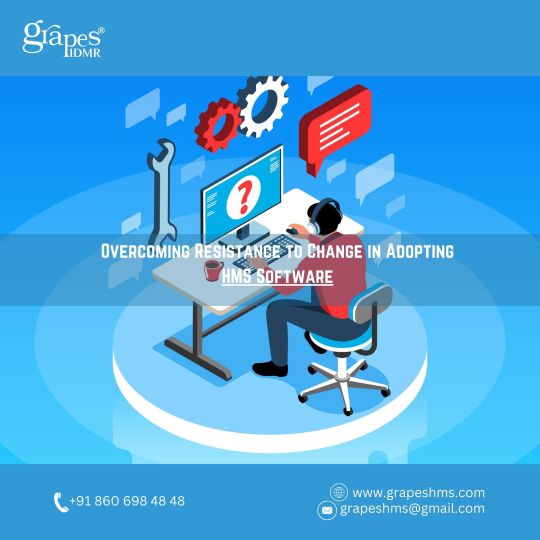
In the healthcare industry, the adoption of Hospital Management Software (HMS Software) is crucial for improving patient care, streamlining operations, and enhancing efficiency. However, healthcare organizations often encounter resistance to change when implementing HMS software solutions. Let's explore common reasons for resistance to change and strategies for overcoming them to ensure successful adoption of the best HMS software.
Fear of the Unknown:
Resistance to change often stems from fear of the unknown among healthcare staff. Employees may feel apprehensive about learning new software, adapting to new workflows, or facing uncertainties about how the change will impact their roles and responsibilities.
Solution: To address fear of the unknown, healthcare organizations should provide comprehensive training and support to staff members before and during the implementation of HMS software. Offering hands-on training sessions, user guides, and access to support resources can help alleviate fears and build confidence in using the new software. Additionally, transparent communication about the goals, benefits, and expected outcomes of adopting HMS software can help staff understand the rationale behind the change and its potential impact on patient care and workflow efficiency.
Comfort with Existing Systems:
Healthcare professionals may resist adopting HMS software if they are comfortable with existing systems or processes. They may perceive the new software as disruptive or unnecessary, especially if they have grown accustomed to manual workflows or legacy systems.
Solution: To overcome resistance based on comfort with existing systems, healthcare organizations should emphasize the benefits and advantages of HMS software over traditional methods. Highlighting the capabilities of the best HMS software, such as improved efficiency, enhanced patient care, and access to real-time data, can help staff see the value of adopting the new system. Additionally, involving staff members in the selection process and soliciting their input on desired features and functionalities can increase buy-in and ownership of the change.
Concerns about workload and productivity:
Healthcare staff may resist adopting HMS software due to concerns about increased workloads or perceived disruptions to productivity. They may worry that learning new software or adjusting to new workflows will take time away from patient care responsibilities or add complexity to their daily tasks.
Solution: To address concerns about workload and productivity, healthcare organizations should provide adequate support and resources to staff members during the transition to HMS software. Offering additional training sessions, peer support networks, and access to technical assistance can help staff overcome challenges and adapt to the new system more quickly. Additionally, implementing phased rollout plans and scheduling software updates during slower periods can minimize disruptions to workflow and mitigate concerns about productivity loss.
Lack of leadership support:
Resistance to change can be exacerbated if healthcare staff perceive a lack of support or commitment from leadership. If leaders do not actively champion the adoption of HMS software or fail to allocate sufficient resources to support implementation efforts, staff may question the importance or priority of the change.
Solution: Leadership support is critical for the successful adoption of HMS software. Healthcare leaders should demonstrate their commitment to the change by communicating openly about the organization's vision and goals for adopting HMS software. Providing clear direction, allocating resources, and actively participating in training sessions can show staff that leadership is invested in the success of the initiative. Additionally, recognizing and celebrating milestones and achievements during the implementation process can help build momentum and sustain staff motivation.
In conclusion, overcoming resistance to change in adopting HMS software requires proactive strategies, effective communication, and strong leadership support. By addressing fears of the unknown, highlighting the benefits of the best HMS software, providing support and resources to staff, and demonstrating leadership commitment, healthcare organizations can successfully navigate the transition and reap the rewards of improved patient care and operational efficiency. Embracing change as a strategic investment in the future of healthcare delivery is essential for staying competitive and meeting the evolving needs of patients and providers in today's dynamic healthcare environment.
#HMS#hmssoftware#hospitalsoftware#HealthcareManagementsystem#Healthcare#HospitalManagementSystem#HospitalManagement#BSA#GrapesHMS#MIS#EMR#GrapesIDMR#Grapes#HealthcareManagementSystemsoftware#Software#SoftwareSolution#Doctor#PatientRegistration#IPDManagement#OPDManagement#IDMR#Labmanagement#NursingStation#Dietmanagement#MRDManagement#BloodBank#Linenmanagement#HRManagement#Pharmacy#Radiology
0 notes
Text
Hospital Software Integration: Overcoming Common Challenges
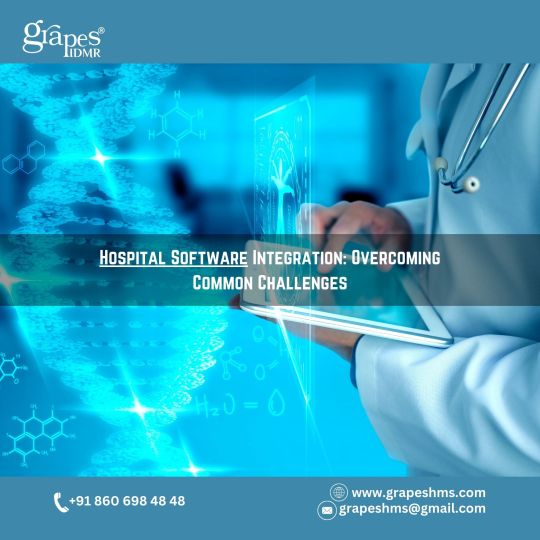
In today's digitally-driven healthcare landscape, the integration of hospital software has become essential for optimizing patient care delivery, streamlining workflows, and improving operational efficiency. However, while the benefits of integration are clear, healthcare organizations often face common challenges when implementing and integrating hospital software solutions. Let's explore these challenges and strategies for overcoming them to ensure successful integration.
Compatibility Issues:
One of the most common challenges in hospital software integration is compatibility issues between different systems and platforms. Healthcare organizations often use a variety of software applications for Electronic Health Records (EHR), billing, scheduling, and other functions, each with its own data formats and protocols. Integrating these disparate systems can be challenging, as they may not be designed to work together seamlessly.
Solution: To overcome compatibility issues, healthcare organizations should invest in hospital software solutions that offer flexible integration capabilities and support industry-standard protocols such as HL7 and FHIR. Working closely with software vendors and IT specialists can help identify compatibility issues early in the integration process and develop customized solutions to ensure smooth interoperability between systems.
Data Security Concerns:
Data security is a top priority in healthcare, and integrating hospital software solutions raises concerns about the security and privacy of patient information. Healthcare organizations must ensure that data exchange between integrated systems is secure and compliant with regulatory standards such as HIPAA and GDPR. Failure to address data security concerns adequately can lead to breaches, compliance violations, and reputational damage.
Solution: Implementing robust security measures such as encryption, access controls, and audit trails is essential for safeguarding patient data during hospital software integration. Healthcare organizations should conduct thorough risk assessments and engage with software vendors who prioritize data security and compliance. Regular security audits and employee training programs can help maintain a culture of security awareness and mitigate the risk of data breaches.
Workflow Disruptions:
Hospital software integration can disrupt existing workflows and processes, causing confusion and resistance among staff members. Healthcare providers may encounter difficulties adapting to new systems or changes in their workflows, leading to decreased productivity and morale. Resistance to change and a lack of training can further exacerbate workflow disruptions and hinder the success of integration initiatives.
Solution: Effective change management is critical for minimizing workflow disruptions during hospital software integration. Healthcare organizations should involve key stakeholders, including frontline staff, in the integration process from the outset and communicate transparently about the goals and benefits of integration. Providing comprehensive training and support resources to staff members can help alleviate concerns and build confidence in using new systems. Additionally, implementing phased rollout plans and soliciting feedback from end-users can help identify and address workflow issues proactively.
Cost and Resource Constraints:
Hospital software integration projects can be costly and resource-intensive, requiring investments in software licenses, hardware infrastructure, and IT personnel. Healthcare organizations operating on limited budgets may struggle to allocate sufficient resources to integration initiatives, leading to delays or compromises in project scope and quality.
Solution: To address cost and resource constraints, healthcare organizations should conduct thorough cost-benefit analyses and prioritize integration projects based on their potential impact on patient care and operational efficiency. Exploring alternative funding sources such as grants, partnerships, or government incentives can help offset integration costs and accelerate project implementation. Additionally, outsourcing certain integration tasks to experienced third-party vendors or consultants can provide cost-effective solutions and access to specialized expertise.
In conclusion, hospital software integration offers significant benefits for healthcare organizations, but it also presents common challenges that must be addressed to ensure successful implementation. By adopting proactive strategies such as addressing compatibility issues, prioritizing data security, managing workflow disruptions, and addressing cost constraints, healthcare organizations can overcome these challenges and unlock the full potential of integrated hospital software solutions. Embracing hospital software integration as a strategic investment in patient care delivery and operational excellence is essential for staying competitive and meeting the evolving needs of patients and providers in today's dynamic healthcare environment.
#HMS#hmssoftware#hospitalsoftware#HealthcareManagementsystem#Healthcare#HospitalManagementSystem#HospitalManagement#BSA#GrapesHMS#MIS#EMR#GrapesIDMR#Grapes#HealthcareManagementSystemsoftware#Software#SoftwareSolution#Doctor#PatientRegistration#IPDManagement#OPDManagement#IDMR#Labmanagement#NursingStation#Dietmanagement#MRDManagement#BloodBank#Linenmanagement#HRManagement#Pharmacy#Radiology
0 notes
Text
Increasing Staff Productivity Through HMS Software Automation
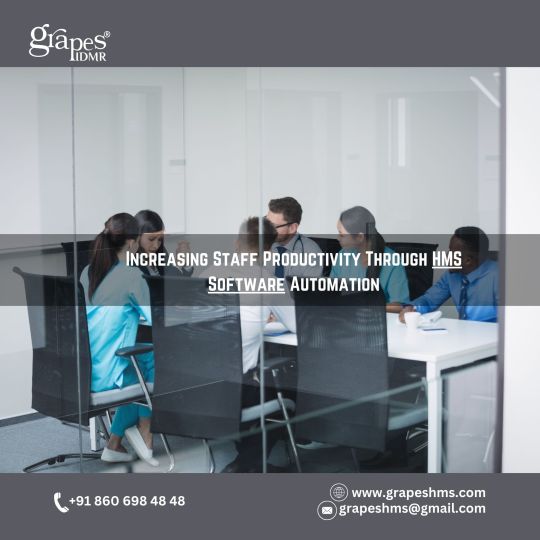
In the fast-paced environment of healthcare, maximizing staff productivity is essential for delivering high-quality patient care and optimizing operational efficiency. Hospital Management Software (HMS Software) automation plays a crucial role in streamlining workflows, reducing manual tasks, and empowering staff to focus on providing excellent patient care. Let's explore how automation through the best HMS software can enhance staff productivity and drive positive outcomes in healthcare organizations.
Streamlined Administrative Tasks:
HMS software automation streamlines routine administrative tasks such as appointment scheduling, patient registration, and billing processes. Automated appointment reminders, electronic patient forms, and billing automation functionalities eliminate manual data entry and paperwork, saving time and reducing the risk of errors. By automating these administrative tasks, healthcare staff can focus their time and energy on more value-added activities, such as patient care and clinical decision-making.
Electronic Health Records (EHR) Documentation:
Automating EHR documentation processes through HMS software reduces the time and effort required for healthcare providers to update patient records and documentation. With features such as voice recognition software and templates for common documentation tasks, HMS Software enables providers to input information quickly and accurately, ensuring that patient records are up-to-date and comprehensive. This automation improves workflow efficiency and allows providers to spend more time interacting with patients and delivering care.
Medication Management and Prescription Refills:
HMS software automation simplifies medication management and prescription refill processes for healthcare providers. Integrated electronic prescribing functionalities enable providers to electronically send prescriptions to pharmacies directly from the HMS software, eliminating the need for paper prescriptions and manual faxing. Automated medication alerts and reminders help providers stay informed about medication changes and refill requests, ensuring timely medication management and improving patient safety.
Clinical Decision Support Systems (CDSS):
The best HMS software incorporates Clinical Decision Support Systems (CDSS) that leverage automation to assist healthcare providers in making evidence-based clinical decisions. CDSS tools analyze patient data, medical history, and best practice guidelines to provide real-time recommendations and alerts to providers. By automating clinical decision support processes, HMS software helps providers identify potential risks, avoid medication errors, and improve adherence to clinical guidelines, ultimately enhancing patient outcomes.
Reporting and Analytics:
HMS software automation simplifies reporting and analytics processes by automating data collection, analysis, and visualization tasks. Automated reporting functionalities generate predefined reports on key performance indicators, such as patient wait times, appointment volumes, and revenue cycles, allowing healthcare administrators to monitor performance metrics and identify areas for improvement. By automating reporting and analytics, HMS Software enables healthcare organizations to make data-driven decisions and optimize resource allocation effectively.
In conclusion, HMS software automation plays a crucial role in increasing staff productivity and improving operational efficiency in healthcare organizations. By streamlining administrative tasks, automating EHR documentation, simplifying medication management, leveraging clinical decision support systems, and automating reporting and analytics, the best HMS software empowers healthcare staff to work more efficiently and focus on delivering excellent patient care. Embracing automation through HMS software is essential for healthcare organizations looking to enhance staff productivity, reduce administrative burden, and achieve better outcomes in today's dynamic healthcare environment.
#HMS#hmssoftware#hospitalsoftware#HealthcareManagementsystem#Healthcare#HospitalManagementSystem#HospitalManagement#BSA#GrapesHMS#MIS#EMR#GrapesIDMR#Grapes#HealthcareManagementSystemsoftware#Software#SoftwareSolution#Doctor#PatientRegistration#IPDManagement#OPDManagement#IDMR#Labmanagement#NursingStation#Dietmanagement#MRDManagement#BloodBank#Linenmanagement#HRManagement#Pharmacy#Radiology
0 notes
Text
Enhancing Patient Engagement with Hospital Software Portals

In today's healthcare landscape, patient engagement is a crucial aspect of delivering high-quality care and achieving positive health outcomes. Hospital software portals play a pivotal role in enhancing patient engagement by providing individuals with convenient access to their health information, communication tools, and interactive features. Let's explore how hospital software portals are transforming patient engagement and improving the overall healthcare experience.
Access to Personal Health Information:
Hospital software portals serve as centralized platforms where patients can access their personal health information anytime, anywhere. From medical records and test results to medication lists and appointment schedules, these portals provide patients with a comprehensive view of their health status and treatment plans. Empowered with access to their health data, patients can take a more active role in managing their health and making informed decisions about their care.
Secure communication channels:
Hospital software portals facilitate secure communication between patients and healthcare providers, enabling individuals to engage in meaningful conversations and seek clarification on their health concerns. Through secure messaging features, patients can communicate with their providers, ask questions, request prescription refills, and discuss treatment options without the need for face-to-face appointments. This enhances communication, fosters trust, and strengthens the patient-provider relationship.
Appointment Management and Reminders:
Efficient appointment scheduling is essential for ensuring timely access to care and improving patient satisfaction. Hospital software portals allow patients to schedule, reschedule, or cancel appointments conveniently online. Automated appointment reminders via email or SMS help patients stay informed about upcoming visits, reducing the likelihood of missed appointments and enhancing continuity of care. By empowering patients to manage their appointments, hospital software portals promote engagement and encourage proactive healthcare-seeking behaviors.
Educational Resources and Self-Care Tools:
Hospital software portals offer access to a wealth of educational resources and self-care tools that empower patients to take charge of their health and well-being. From articles and videos on managing chronic conditions to interactive self-assessment tools and health trackers, these resources equip patients with the knowledge and tools they need to make informed lifestyle choices, monitor their health metrics, and manage their conditions more effectively between clinical visits.
Feedback and satisfaction surveys:
Hospital software portals enable healthcare organizations to solicit feedback from patients about their care experiences and satisfaction with services. Through online surveys and feedback forms, patients can share their opinions, suggestions, and concerns, providing valuable insights that inform quality improvement initiatives and drive patient-centered care. By actively involving patients in the feedback process, hospital software portals foster a culture of transparency, accountability, and continuous improvement within healthcare organizations.
In conclusion, hospital software portals play a vital role in enhancing patient engagement and improving the overall healthcare experience. By providing patients with access to their health information, secure communication channels, appointment management tools, educational resources, and feedback mechanisms, these portals empower individuals to take an active role in their care journey. Embracing hospital software portals is essential for healthcare organizations committed to delivering patient-centered care and fostering meaningful engagement with patients in today's digital age.
#HMS#hmssoftware#hospitalsoftware#HealthcareManagementsystem#Healthcare#HospitalManagementSystem#HospitalManagement#BSA#GrapesHMS#MIS#EMR#GrapesIDMR#Grapes#HealthcareManagementSystemsoftware#Software#SoftwareSolution#Doctor#PatientRegistration#IPDManagement#OPDManagement#IDMR#Labmanagement#NursingStation#Dietmanagement#MRDManagement#BloodBank#Linenmanagement#HRManagement#Pharmacy#Radiology
0 notes
Text
Harnessing Data Analytics for Better Decision-Making with HMS Software

In the modern healthcare landscape, data analytics has emerged as a powerful tool for driving informed decision-making and improving patient outcomes. When integrated with Hospital Management Software (HMS Software), data analytics capabilities can revolutionize the way healthcare organizations operate and deliver care. Let's explore how harnessing data analytics with the best HMS software can lead to better decision-making and ultimately enhance patient care.
Comprehensive Patient Insights:
HMS Software collects vast amounts of patient data, including medical records, diagnostic tests, treatment histories, and demographic information. By harnessing data analytics capabilities, healthcare organizations can analyze this wealth of data to gain comprehensive insights into patient populations, disease trends, and healthcare utilization patterns. These insights enable healthcare providers to identify high-risk patients, predict disease progression, and tailor treatment plans to individual patient needs.
Predictive Analytics for Early Intervention:
One of the most powerful applications of data analytics in HMS software is predictive analytics, which uses statistical algorithms to forecast future events based on historical data. By analyzing patient data over time, predictive analytics algorithms can identify early warning signs of potential health issues, enabling healthcare providers to intervene proactively and prevent adverse outcomes. For example, predictive analytics can help identify patients at risk of readmission or complications, allowing for targeted interventions to be implemented to mitigate risks and improve patient outcomes.
Operational Efficiency and Resource Optimization:
Data analytics can also be used to optimize hospital operations and resource allocation. By analyzing data on patient flow, resource utilization, and workflow efficiency, healthcare organizations can identify bottlenecks, streamline processes, and allocate resources more effectively. For example, analytics insights may reveal opportunities to reduce wait times, improve bed management, or optimize staffing levels, leading to enhanced operational efficiency and cost savings.
Evidence-Based Decision-Making:
Data analytics empowers healthcare organizations to make evidence-based decisions by providing objective insights into clinical outcomes, treatment effectiveness, and healthcare quality metrics. By analyzing data on treatment outcomes, patient satisfaction scores, and adherence to clinical guidelines, healthcare providers can identify best practices, measure performance against benchmarks, and implement data-driven strategies to improve care delivery and patient outcomes.
Continuous Quality Improvement:
HMS software integrated with data analytics capabilities supports continuous quality improvement initiatives within healthcare organizations. By monitoring key performance indicators, tracking outcomes, and identifying areas for improvement, healthcare providers can drive ongoing quality improvement efforts. For example, analytics insights may reveal opportunities to standardize care protocols, reduce medical errors, or enhance patient safety initiatives, leading to measurable improvements in care quality and patient outcomes over time.
In conclusion, harnessing data analytics with HMS software is essential for driving better decision-making and improving patient care in modern healthcare organizations. By leveraging data analytics capabilities to gain insights into patient populations, predict health outcomes, optimize operations, and drive continuous quality improvement, healthcare providers can deliver more effective, efficient, and patient-centered care. Investing in the best HMS software with robust data analytics capabilities is a strategic decision that can lead to significant improvements in healthcare delivery and patient outcomes.
#HMS#hmssoftware#hospitalsoftware#HealthcareManagementsystem#Healthcare#HospitalManagementSystem#HospitalManagement#BSA#GrapesHMS#MIS#EMR#GrapesIDMR#Grapes#HealthcareManagementSystemsoftware#Software#SoftwareSolution#Doctor#PatientRegistration#IPDManagement#OPDManagement#IDMR#Labmanagement#NursingStation#Dietmanagement#MRDManagement#BloodBank#Linenmanagement#HRManagement#Pharmacy#Radiology
0 notes
Text
The Importance of Customization in Hospital Software Solutions
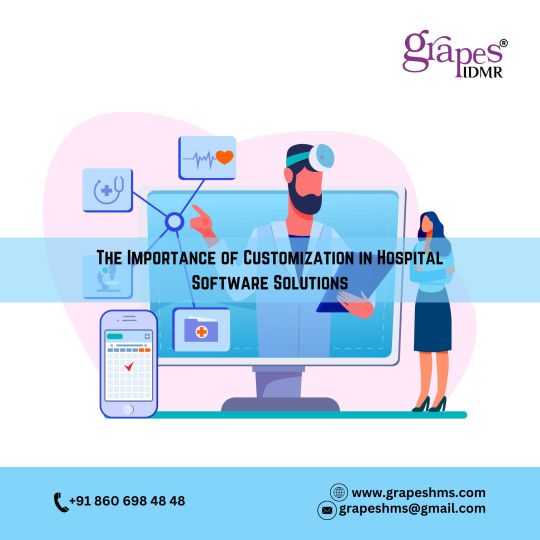
In the ever-evolving landscape of healthcare, hospital software has become an indispensable tool for managing operations, improving patient care, and enhancing overall efficiency. One of the key factors that contributes to the success of hospital software solutions is customization. Let's delve into the importance of customization in hospital software solutions and how it can benefit healthcare organizations.
Tailored to unique needs:
Every healthcare organization has its own set of workflows, processes, and requirements. Off-the-shelf software solutions may not fully align with these unique needs, leading to inefficiencies and limitations in functionality. Customization allows hospital software solutions to be tailored specifically to the requirements of each organization, ensuring that they address specific pain points and facilitate seamless operations.
Enhanced User Experience:
Customized hospital software solutions prioritize the user experience by providing interfaces and functionalities that are intuitive and easy to use. By understanding the preferences and workflows of end-users, customization allows for the development of user-friendly interfaces that streamline tasks and minimize training requirements. This results in higher user adoption rates and increased productivity among healthcare staff.
Integration with Existing Systems:
Healthcare organizations often have existing systems and technologies in place, such as electronic health records (EHR) systems, laboratory information systems (LIS), and billing platforms. Customization enables hospital software solutions to integrate seamlessly with these existing systems, facilitating data exchange and interoperability. This integration eliminates silos and ensures that all systems work together harmoniously, maximizing efficiency and accuracy in data management.
Scalability and Flexibility:
Customized hospital software solutions are designed with scalability and flexibility in mind, allowing them to grow and evolve alongside the organization. As healthcare needs change and technology advances, customization ensures that the software can be easily adapted and expanded to accommodate new requirements and functionalities. This scalability enables healthcare organizations to future-proof their investments and stay ahead of emerging trends.
Addressing Regulatory Compliance:
The healthcare industry is highly regulated, with stringent requirements for data security, patient privacy, and regulatory compliance. Customized hospital software solutions can be developed with built-in features and controls to ensure compliance with industry standards and regulations, such as HIPAA and GDPR. By incorporating these compliance measures from the outset, customization helps healthcare organizations mitigate risks and avoid potential penalties.
Empowering Innovation:
Customization fosters a culture of innovation within healthcare organizations by empowering them to implement unique workflows and processes that drive efficiency and improve patient care. By working closely with software developers to customize solutions according to their specific needs, healthcare organizations can innovate and differentiate themselves in a competitive market, ultimately leading to better outcomes for patients.
In conclusion, customization plays a pivotal role in the success of hospital software solutions by tailoring them to the unique needs of healthcare organizations. From enhancing the user experience and integrating with existing systems to ensuring scalability and addressing regulatory compliance, customization enables hospitals to maximize the value of their software investments and deliver high-quality, patient-centered care. Embracing customization is essential for healthcare organizations looking to stay agile, innovative, and competitive in today's dynamic healthcare landscape.
#HMS#hmssoftware#hospitalsoftware#HealthcareManagementsystem#Healthcare#HospitalManagementSystem#HospitalManagement#BSA#GrapesHMS#MIS#EMR#GrapesIDMR#Grapes#HealthcareManagementSystemsoftware#Software#SoftwareSolution#Doctor#PatientRegistration#IPDManagement#OPDManagement#IDMR#Labmanagement#NursingStation#Dietmanagement#MRDManagement#BloodBank#Linenmanagement#HRManagement#Pharmacy#Radiology
0 notes